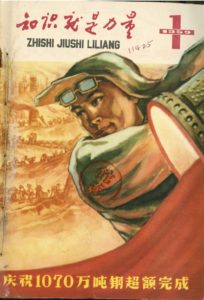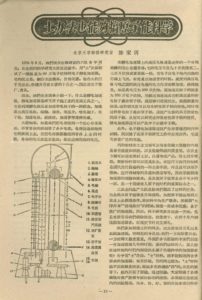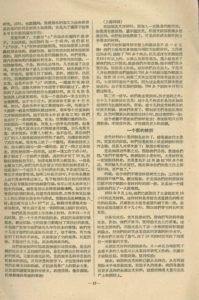Electrostatic Accelerators for Peasants (1959)
Electrostatic Accelerators for Peasants (1959)
In 1956 a new journal dedicated to the dissemination of science appeared, entitled Knowledge Is Power (Zhishi jiushi liliang 知识就是力量, 1956-62). The title referred to the famous saying by Francis Bacon (1561-1626), that is “knowledge itself is power” (ipsa scientia potentia est). It is not surprising that this saying enjoyed greatest popularity during Maoist times. The namesake of this Chinese journal was a Soviet journal on popular science that had installed Bacon’s slogan as a generally shared idea in socialist countries and shaped the consciousness of the new working class. It followed the style and ideas of its Soviet namesake Знание-сила, presented the vision of “tomorrow” – the near future – for young workers and students of polytechnic secondary schools. Its aim was to place production and dissemination of knowledge in the hands of the working people. The date of founding this journal was not coincidental. In 1956 the state called for “marching towards science” (xiang kexue jinjun 向科学进军), a slogan behind which were China’s awareness of its backwardness in science and technology and its later desire to reduce its dependence on the Soviet Union. The first five issues edited by the Soviet side set the example of cultivating the ethos of the future in its readers. In the inaugural issue, the Russian/Soviet chemist N. D. Zelinsky (1861-1953) was cited as saying that “our present is the future of our foreign friends,” a quote temporalizing the spatially located Soviet Union into the future and thereby putting it on a higher stage of the linear progression of history for other socialist countries to emulate. With the Sino-Soviet split deteriorating the relations between both countries more and more contributions to the journal were emphasizing the need to develop autarky and indigenous methods (tubanfa 土办法) for achieving modernization.
The strong belief in the ability to do so was not limited to issues of technology in agricultural and industrial production, was also believed to play a role in nuclear physics, as described in an article calling for building electrostatic accelerators with tubanfa. Published in 1959 during the Great Leap Forward, the article proposes to build electrostatic accelerators, each at a price of 3,000 Yuan and on the basis of locally available resources, so that farmers could improve their agricultural production by for example exposing seedlings to gamma radiation. In this case, high technology was directly linked to the daily production activities of farmers, thereby reducing the distance between educated experts and workers and farmers. The new socialist regime could allow neither production nor dissemination of knowledge to be an exclusive affair of the elite and rather aimed at placing it in the hands of the working people.
Marc Matten and Rui Kunze


